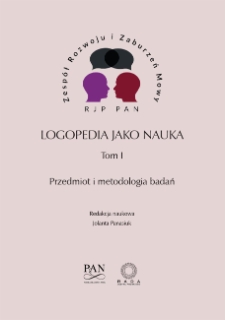Abstract
The content of the chapter, which is located among methodological, theoretical and conceptual works, reflects the process of building a metatheory concerning logopedics as science in a broad sense ( sensu largo), as well as logopedics in a narrow sense (s ensu stricto). Although logopedics sensu stricto is part of logopedics sensu largo, the borders between them are clear and at the level of metascience – impassable. An intended demarcation radicalism made it possible to distinguish logopedics, which emphasises its links with external conditions of its development (historical, social-cultural, psychological), whose basic research categories are: the subject of speech therapy, the object of speech therapy and speech therapy sensu stricto, as well as logopedics sensu stricto itself, whose components are: research work and its products (the knowledge about the subject of cognition, methodology, terminology). The latter, which is a hard scientific nucleus of logopedics, goes beyond the level of science in the direction of metascience, that is metalogopedics.
Go to publication
